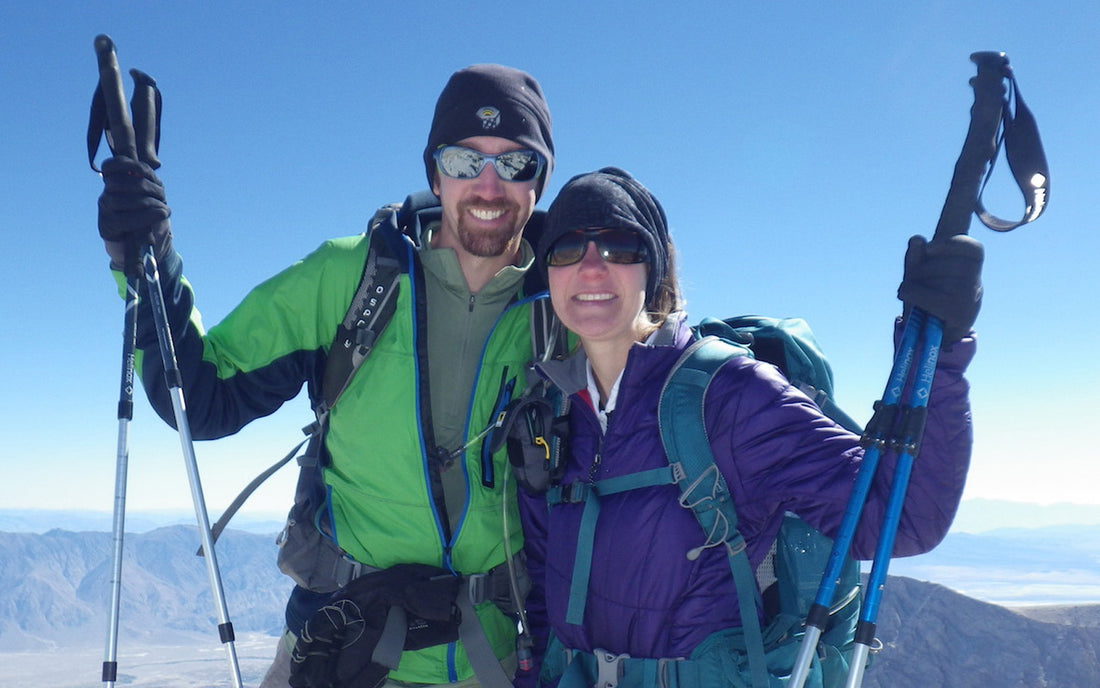
Highpointing: A Peak For Everyone
Patrice La Vigne
Justin and I are serial “listers.” Our bucket list is way too long and perpetually updated, but as a goals-oriented couple, we rely on our lists to fuel our adventures. If there is one item that we work the hardest at completing, it is to reach the highest point of each of the 50 states in the US.
Highpointing: A Growing Culture
Highpointing is a bit of a growing culture. Back in the 1950s, a grand total of four people had completed all the states. When we first started ticking off high points in 2006, about 100 people had hit the goal. Now that we are up to 36 high-points ourselves, the craze is becoming more evident with a few guidebooks and an annual club convention with 300 members in attendance.
Getting to the high-points requires a wide range of effort with elevations ranging from 350 feet (Florida’s Britton Hill) to 20,310 feet (Alaska’s Denali). But more often than not, the logistical challenges of finding the high-points is much harder than actually touching the high-point sign. I vividly remember, for example, cursing the map when searching for the unmarked turnoff for Hoosier Point in Indiana.
Another thing to consider is private property. Rhode Island’s Jeromith Hill used to be the most controversial high-point due to property complications, but the highpointer club worked tirelessly to grant unlimited access. The highest point in Illinois, Charles Mound, however, still sits on a family farm and the owners typically allow access during daylight hours during the first weekend of every summer month. Clearly, Justin and I have spent a lot of time planning out high-point-specific road trips.
Highpointing: Rewarded By The Destination
We’ve all heard the saying “it’s about the journey, not the destination.” And while we certainly have a lot of memories about the journeys to the highest point in each state, this is a case where it may be all about the destination.
There are 14 state high-points where you literally just pull up and can see the marker from your parked car. Another dozen or so require less than a 1-mile walk from the parking lot.
Many states take pride in their high-points by sprucing up the sites with restrooms, shelters and fun signs through such efforts as Eagle Scout and Rotary Club projects.
Two of my personal favorites are Mt. Sunflower in Kansas and Hawkeye Point in Iowa. With nothing, I repeat nothing, but vast lowlands for miles to the horizon, these states attempt to make things interesting.
Other pleasant surprises include Oklahoma’s Black Mesa, Arkansas’ Mount Magazine/Signal Hill and South Dakota’s Harney Peak. Not only were they all nicely decorated with plaques, but the day-hike getting there was beautiful too.
Unfortunately, there are a few drive-up peaks that still leave you scratching your head and saying, “I must be here” with only strewn garbage to mark the point (I’m shaking my fist at you, Sassafras Mountain in South Carolina).
Highpointing: Human-Powered Efforts
Less than 10 high-points require technical knowledge or equipment. You expect difficulty with Washington’s Mt. Rainier, California’s Mt. Whitney and Alaska’s Denali (stay tuned to hear how Justin’s expedition goes this summer), but a few others are understated.
Take Idaho’s Borah Peak, for example. At 12,688 feet, the elevation alone is challenging. But the real story is the 5000-foot climb made over 4 miles, which includes the .25-mile “Chicken Out Ridge.” Despite the difficult terrain, the crowds flock to Borah and many are unprepared for the challenging trek. In fact, the day we hiked, we had to rescue a young girl who was in over her head.
With 36 high points under our belt, we have a few that are just completely on the way to nowhere (North Dakota) and a few that will require major time and effort (already turned back by a whiteout on Mt. Hood).
I’m going to venture to call highpointing a lifetime goal.







